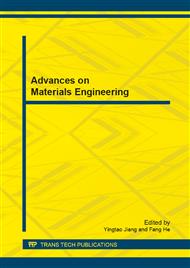p.60
p.69
p.74
p.80
p.86
p.92
p.99
p.107
p.112
Ring Test for the Measurement of Restrained Shrinkage of Concrete
Abstract:
Shrinkage of repair material is the major factor inducing cracking in concrete repairs. Induced cracks in repair materials are due to restrained shrinkage. The ring test is commonly used to assess the potential for restrained shrinkage induced cracking due to its simplicity and versatility. The restrained ring test is becoming widely used as a standard test method to assess the potential for early-age cracking in concrete. In this investigation, a ring test set up was developed to measure the restrained shrinkage of various repair materials available in the local market. Keeping in view the importance of the local environment, two environment conditions were used; Lab Environment (Temperature 23±2°C) and the open environment of Riyadh. These environmental conditions were used taking into account the local environmental conditions. The samples were outside for almost one year and encountered all weather conditions of Riyadh. It has been observed that some materials although manufactured by highly reputed companies didnt comply fully in restrained shrinkage tests.
Info:
Periodical:
Pages:
86-91
Citation:
Online since:
August 2013
Authors:
Keywords:
Price:
Сopyright:
© 2013 Trans Tech Publications Ltd. All Rights Reserved
Share:
Citation:


